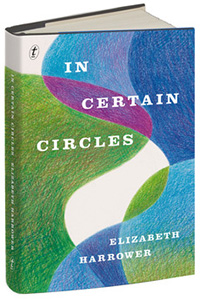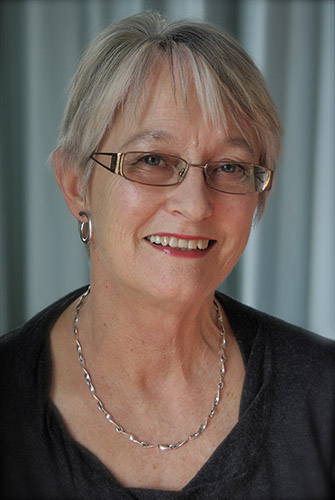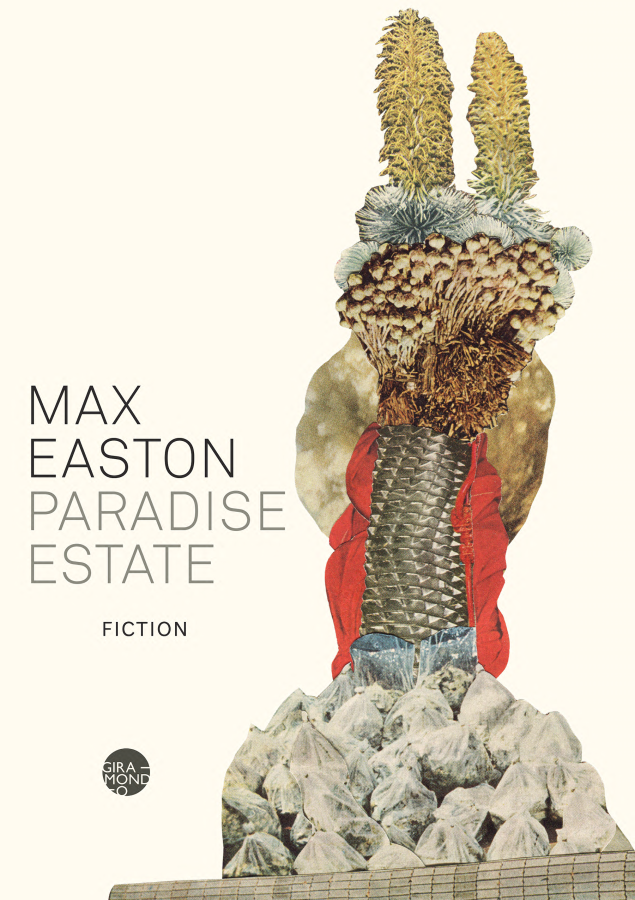Furies and people are destroyed, sometimes helplessly understanding their executioners, destroyed not for overweening (hubris) but for innocence and unlikeness; a most powerful concept which belongs to tragedy.
Christina Stead’s astute comment on Elizabeth Harrower’s fiction could equally well be made on her own. Both writers specialise in characters who prey on each other, ‘executioners’ endlessly tormenting their victims in the privacy of their own homes. In such situations, ‘innocence and unlikeness’ are liabilities, dangerous to their possessors.
The two writers became friends late in Stead’s life, when she returned to Australia to live in the 1970s. Harrower, then in her forties, had already stopped publishing fiction after the success of her four powerful novels. The last of these, The Watch Tower, first published in 1966 and recently reprinted by Text Publishing, is widely admired as a chilling study of the mutual dependence of an abusive marital relationship, as observed by the wife’s younger sister, who is also imprisoned in its webs of manipulation and self-delusion.
In Certain Circles, completed in 1971 but not published until now, concerns two pairs of siblings living in Sydney in the years immediately after World War II. Place and time are comparable to The Watch Tower, and Harrower’s central theme of abuser and victim caught in a monkey grip is evident, although it informs only one of several key relationships. In this novel, no one is ultimately destroyed. In Certain Circles plays out variations on key themes of love and pity, without the concentrated ferocious malignity of Harrower’s earlier classic.
Zoe and Russell Howard, children of middle-class professional parents living in the leafy harbourside suburb of Mosman, meet up with orphaned siblings Anna and Stephen Quayle. Zoe, at seventeen, leads a charmed life, admired and loved by all, but her older brother has survived imprisonment during the war and is acutely aware of the contrast between their privileged life and the sufferings of others. He draws the Quayles into the Howard family circle, encouraging them to look beyond the stifling life they endure with the uncle and aunt who raised them after their parents’ deaths. That the Quayles’ home is in Parramatta only serves to underline the contrast between their social isolation and the Howards’ privileged position within the middle class of postwar Sydney. Over a period of some twenty years, the four main characters meet and part and meet again. Zoe and Stephen marry after she returns from her budding career as a film-maker in Paris to attend her mother’s funeral. Russell has married his pre-war fiancée, Lily, and with their twin daughters they too return from years in Europe to live in the family home. Anna nurses a secret passion for Russell, which is not resolved until the final, surprising denouement.
The narrative concerns the ways people make sense of what is happening to them. It proceeds through a series of conversations and, in the case of Anna in part one, though her journal. All the main action – weddings, journeys, careers – happens off-stage and is recorded (sometimes rather laboriously) via reports and reminiscences. This mode of indirection extends even to the concluding scenes, which are initiated by a plot development of Hardy-esque implausibility involving the posting of some letters. This weirdly melodramatic, even farcical, conclusion blasts all their frozen relationships apart and releases them into new and liberating configurations.
My first impression was that Harrower was trying her hand at something like a novel of manners involving conflict between class factions – perhaps an updated Australian version of E. M. Forster’s Howards End (1910), which is evoked by the family name, as well as by the pivotal moment of the mother’s death. There is also a degree of formal patterning. The two sets of siblings form a quartet and there are marked thematic oppositions – between family and orphans, between ‘waste’ and fulfillment, love and work, and so on.
In the great tradition of the novel, Harrower’s characters ask: ‘How are we to live?’ Anna criticises Lily’s view that family are the only people who matter: ‘It looks like an inbuilt absence of discrimination, a missing instinct, as if she doesn’t know what she likes in people, what really pleases her.’ For both Howard siblings, a different question is paramount: whether people are wasting their lives or fulfilling their potential. Both of them focus this concern on Stephen Quayle: Russell wants to set him on the path to a fulfilling career, while Zoe persists in the deluded belief that her love will save Stephen from wasting his life. Indeed, she makes him her project, her raison d’etre. Playing the part of woman-in-love to perfection, she feels that ‘she had fallen through him into the universe, into her real self’. This is what sets her up for a characteristically Harrower and harrowing abusive relationship.
Geordie Williamson has compared Harrower with Ivy Compton Burnett, describing her as a ‘wise, subtle, mannered’ writer whose characters are concerned that ‘What we ought to be is not what we are’. To my ear, this last novel is more ‘wise, subtle, mannered’ than any of Harrower’s others, but it was Elizabeth Bowen who occurred to me as a comparable novelist. Following that hunch, I opened Bowen’s Death of the Heart (1938) only to find a couple called Quayne – Thomas and Anna, who are landed with his unwanted half-sister, aged sixteen. I found, too, some similarly mannered circumlocutions of the kind that can result when a novelist foregoes an omniscient narrative stance and has her characters articulate the themes. For example, Russell says to Zoe:
‘You wonder how the not-wasted could ever flourish, with their fulfillment resting on so much’ – he lightened his tone and finished off – ‘so much of what we’ve just been talking about – waste.’
Elizabeth Bowen is an important presence at a thematic level in Harrower’s work. In The Watch Tower, Clare reads to her sister Laura a passage about pity from Bowen’s The Heat of the Day (1948), in which a young man observes his mother’s suffering: ‘His pity, speaking to her out of the stillness of his face, put her in awe of him, as of a greater sufferer than herself – no pity is ignorant, which is pity’s cost.’ Clare, at fourteen, is excited to find this confirmation of her own feeling of pitying other people their illusions and delusions: ‘she suffered for them, loved and shielded them’. She has no idea that the passage is a sinister anticipation of the relationship between Laura and Felix, which will dominate the next ten years of her life and bring her to despair.
Midway through The Watch Tower, Clare realises that ‘there was to be no end to the pity she must feel for Laura’, just as there is no end to the pity that Laura feels for Felix. The pitied exploit their pitiers, endlessly. Clare feels hatred towards her sister, but despite several attempts she still cannot leave. It is only when she has to explain their relationship to Bernard, the sole outsider to get close enough to the ghoulish family to observe its dynamics, that Clare can see clearly: it is Laura’s pity for her husband that ‘enslaves’ her. It also makes ‘nice’ Laura cruel: ‘she would brand you with hot pokers if Felix asked her to’, Clare observes. Clare is imprisoned not only by pity for her sister, but also by her sister’s loyalty to Felix, their common tormenter. This access to reality allows Clare, finally, to turn away, to leave it all behind – to see Felix as evil, driven by a force that was ‘primitive, chilling, subterranean beyond definition’, and to abandon the sister who ‘would never know what she wanted not to know’.
Pity plays a major role in the destructive relationship between Clem and Christian in Harrower’s third novel, The Catherine Wheel (1960). Like Laura in The Watch Tower, Clem believes that she can ‘cure him, I suppose – make him – what he ought to be – could have been’. In In Certain Circles, Zoe’s devotion to Stephen is motivated by a similar pity and a desire to enable him to be ‘what he ought to be’. It proves to be as self-defeating as Clem’s love, although the outcome is less destructive because Stephen possesses a modicum of rationality and Zoe comes to understand what has gone on between them before it is too late to extricate herself. Pity also drives Russell’s desire to help others, and on the whole his actions have good outcomes.
The extended exchange between him and Anna about the nature of pity suggests why this may be so. When Anna declares ‘I can’t see the world as a great hospital with us all nursing and pitying each other’, Russell – who ‘always feels sorry for people’ – questions her further. Pity must be ‘dispassionate’, she avers, otherwise it may work a ‘maniacal exclusiveness’ like her uncle’s – and, readers of The Watch Tower will silently add, like Laura’s. Alternatively, the pitier may be corrupted by assuming ‘the mantle of one abler and wiser’. Without the attribution of responsibility to the pitied, and without some dispassionate distance, pity is deadly dangerous. Graphically, Anna adds: ‘I’ve seen good people bleed themselves to death from pity. I’ve seen the pitied splash in their life’s blood, like children playing with water.’
In Certain Circles refuses the drama of this scenario, which Harrower had dealt with so consummately well, so shockingly, in The Watch Tower. It is as though, having worked through the extremes of that subject, she can take it as read. She can refer to Anna and Stephen’s childhood blighted by the ‘maniacal exclusiveness’ of their uncle’s pity for his deranged wife, without having to dramatise it. In this more nuanced analysis of relationships, the themes converge on the questions of how to live a fulfilled life, how to ‘do yourself justice’, how not to ‘waste’ one’s life.
These are Howard family questions – they drive Zoe and Russell, and arise from their position of privilege. Pity plays a part for each of them, but it is not ignorant – or not on Russell’s part. For the orphaned brother and sister, Stephen and Anna Quayle, the key question is less ambitious and outgoing. It concerns survival and, for Anna, faith in the possibility of disinterested goodness, something her brother scoffs at. This is what Russell represents for her: it makes him ‘someone you need never feel sorry for’. At the same time, she has long believed that she must ‘bear her life without Russell, not to fall into despair’. Above all, she must never pity herself.
Given the prominence of these ideas and the conversations about them, Russell’s place in the novel is central. For that very reason, it is disappointing that he is such a shadowy figure. He is present in conversation, but not strongly present in the flesh. This is perhaps because he is a man whose need of others is less urgent, or less personal, than their need of him. He seems to be driven by survivor guilt to help others and demand nothing in return. He can explain Stephen in terms of the irreversible damage he has suffered and his inability to accept love, but no one really explains Russell. One can sympathise with Lily when she criticises her husband for ‘always making amends to the world for something a lunatic couldn’t call his fault … He’s like an angel of God consoling us sinners for not being perfect. Like him.’
The structural strength of the novel lies in the dramatic balance between Zoe and Anna. Theirs are the principal points of view, and so the emphasis falls on the experiences of young women. As she records her life of impoverished independence with an office job and a room in a boarding house, Anna reports having been asked: ‘How do girls manage?’ It is a question that reverberates. The three-part structure makes most sense if we see it marking the stages in the young women’s lives: starting out in life (for Zoe, all possibilities seem promised, while Anna must struggle in poverty and loneliness); as ‘women in love’ (a delight for Zoe, secret despair for Anna); and in maturity (entrapment for Zoe, recovery through creative work for Anna). The resolution allows Zoe to escape from imprisonment in her love for Stephen, and grants Anna the freedom to declare her love for Russell.
Celebrating change, in the end, rather than bare survival, takes In Certain Circles outside the destructive mode that distinguished Harrower’s other novels. While satisfying in its balance and insight, it lacks the driven intensity of its predecessors. They all featured narratives that went on and on, ‘from fire to more fiery to fierier still’ – which was Stead’s ambition for the narrative build-up of her last novel, I’m Dying Laughing (1986), which was posthumously published because she could never finish it to her satisfaction.
Harrower’s latest novel – it cannot be called her last, as she is alive and well and living in Sydney – was, by contrast, completed and accepted by her publisher, Macmillan; but she withdrew it. Over the intervening years, she told several interviewers that she did this because the novel ‘seemed wrought, manipulated, not organic’. She felt it lacked the intense vitality of the egotists who had always interested her: ‘the characters, in their own weird way, should drag it along, with the life in them’. That characteristic quality of drivenness was missing. ‘It was well written because once you can write, you can write a good book,’ she told Helen Trinca, ‘but there are a lot of dead novels out in the world that don’t need to be written.’ In Certain Circles is not by any means one of those ‘dead novels’, whatever the real source of its author’s dissatisfaction might have been. Disinterred forty years later, its vitality is attested by numerous enthusiastic reviewers. The great question now is how will it – along with the republication of her other titles – reconfigure the account of Harrower’s small but significant oeuvre, and consequently the story of Australian fiction in the post-war period?
References
Jim Davidson, Sideways from the Page: The Meanjin Interviews (Fontana, 1983).
Giulia Guiffre, A Writing Life: Interviews with Australian Women Writers (Allen & Unwin, 1990).
Elizabeth Harrower, The Catherine Wheel (Text Publishing, 2014).
Elizabeth Harrower, The Watch Tower (Text Publishing, 2012).
Christina Stead, ‘Admired Acquaintance: A view of Australian fiction,’ The National Times (18-23 October 1976).
Helen Trinca, ‘Novelist Elizabeth Harrower has lived dangerously but kept her words to herself,’ The Australian (27 October 2012).
Geordie Williamson, The Burning Library (Text Publishing 2012).





